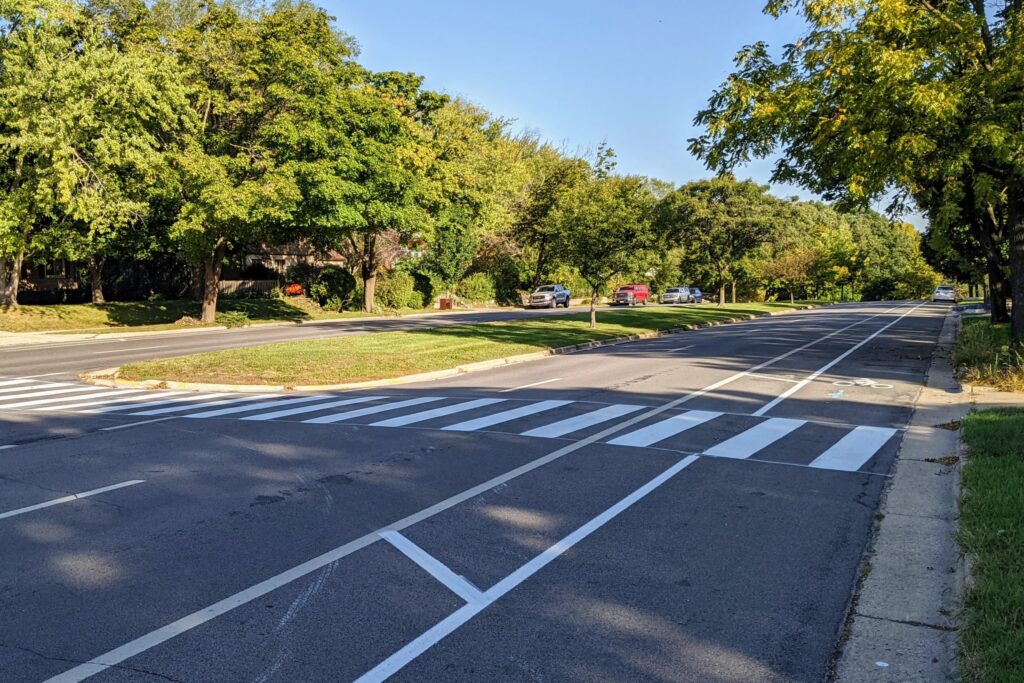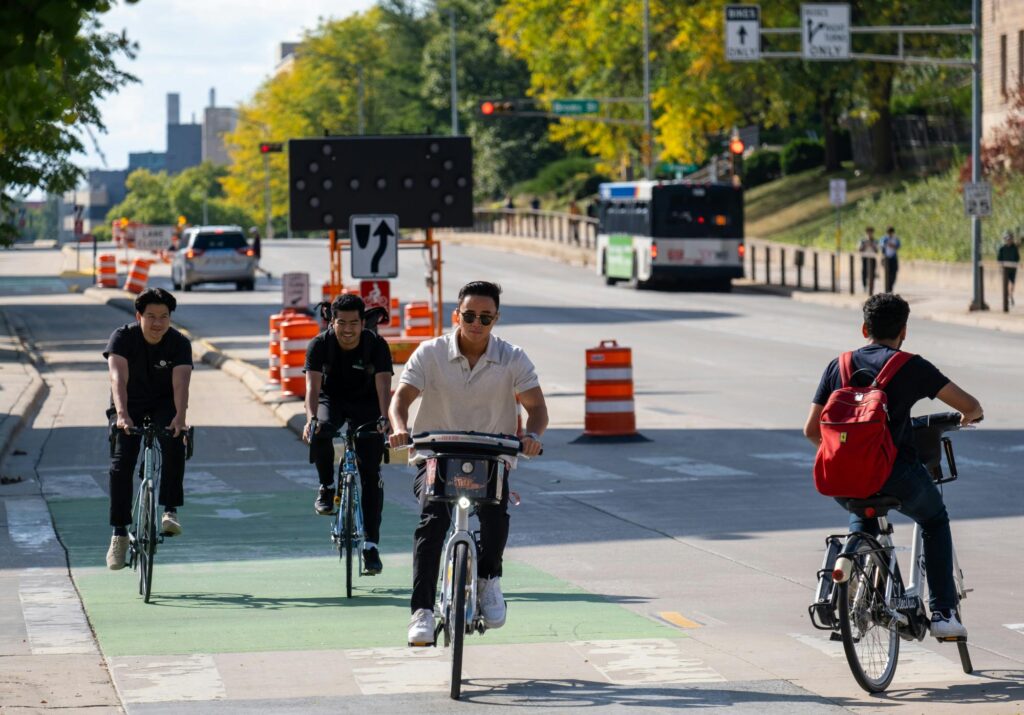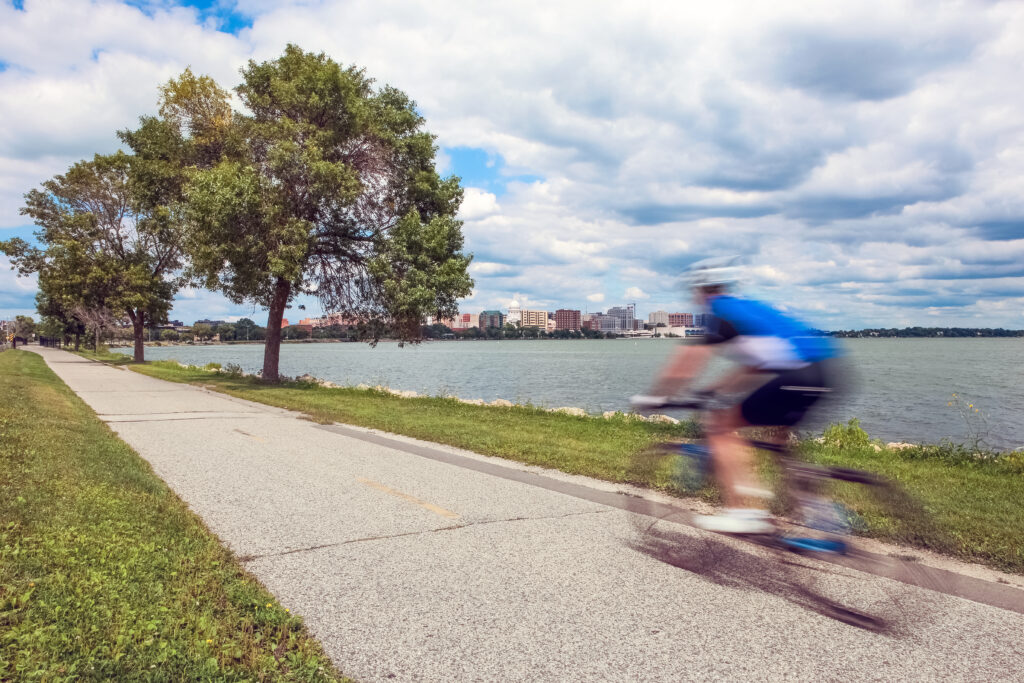
Why Madison is a Cyclist-Friendly City
Madison, Wisconsin offers a robust network of bike lanes throughout the city and campus areas, making it one of America’s most bike-friendly cities. While these lanes are designed for safety and accessibility, cyclists quickly learn that Madison’s cycling infrastructure has quirks and unwritten rules. This guide provides everything needed for safe, confident cycling in a city passionate about bikes.
Types of Bike Lanes in Madison
Unprotected Bike Lanes (Closest to Cars)

Image of Whitney Way on Madison’s West Side, Source: madisonbikes.org
Many busy downtown streets, such as East Johnson Street and Gorham Street, have unprotected bike lanes. These lanes place cyclists closest to vehicle traffic, requiring extra attention. When using these lanes, make sure to:
- Ride with the flow of traffic, obeying all stoplights and signs.
- Watch for hazards like car doors opening near parked cars, especially around restaurants and coffee shops.
- Use bike-specific signals when available and learn how they operate. Learn more about Madison’s bike signals.
Protected Bike Lanes (A Cyclist’s Dream)

Image of University Avenue, Source: The Daily Cardinal
Madison has added more barrier-separated bike lanes in recent years, offering a safer ride than unprotected lanes. However, caution is still essential:
- Drivers turning right may not always be able to see cyclists.
- Cyclists must obey all traffic rules, including signals and lane markings.
- Maintain awareness at intersections, especially where bike lanes cross vehicle lanes.
Shared Use Paths (Cyclists and Pedestrians)

Image of Howard Temin Lakeshore Path, located on Lake Mendota.
Shared use paths are often the safest option for cyclists, but can present challenges. Popular routes like Capital City Trail or paths on the lakefront can be crowded with joggers, walkers, families, and dogs, particularly on weekends or summer evenings. When using these trails, keep in mind that:
- High foot traffic creates frequent congestion.
- Pets and children can be unpredictable along the path.
- A steady pace and patience help ensure a positive experience for everyone.
Bike Lane Etiquette & Rules for Safe Riding
- Use hand signals for turns, stops, and lane changes.
- Ride single-file on crowded streets, or side-by-side when space allows.
- Wear reflective gear and use lights to stay visible.
- Follow all Wisconsin bicycle laws to ensure safety for both cyclists and drivers.
Seasonal Riding Tips in Madison
- Winter: Watch for ice, snow, and salt. Consider studded tires and layer clothing.
- Summer: Stay hydrated, wear sun protection, and anticipate crowded paths during peak hours.
- Rain & Fall: Wet leaves and puddles can reduce traction — slow down and maintain control.
General Safety Gear Recommendations for Cyclists
- Helmet, lights (front and rear), reflective clothing, and a bell or horn should always be utilized
- Gloves, mirrors, and a secure bike lock are additional recommended but optional gear.
- Regular maintenance: brakes, tires, and lights should be checked before every ride.
Common Hazards & How to Avoid Them
- Car doors: Always ride at a safe distance from parked cars.
- Turning vehicles: Be aware of drivers who may not see cyclists in protected lanes.
- Pedestrians: Expect sudden stops or crossings, especially on shared-use paths.
Resources, Local Cycling Groups & Maps
- Dane County Bicycle Map – Official city bike lane and trail maps.
- Local cycling clubs and advocacy groups provide workshops, group rides, and safety resources.
- Apps and websites can offer real-time traffic or trail updates.
Madison offers a cyclist-friendly environment, but awareness, patience, and proper preparation are key. By following safety rules, respecting other path users, and equipping the right gear, both residents and visitors can confidently navigate the city’s bike lanes.